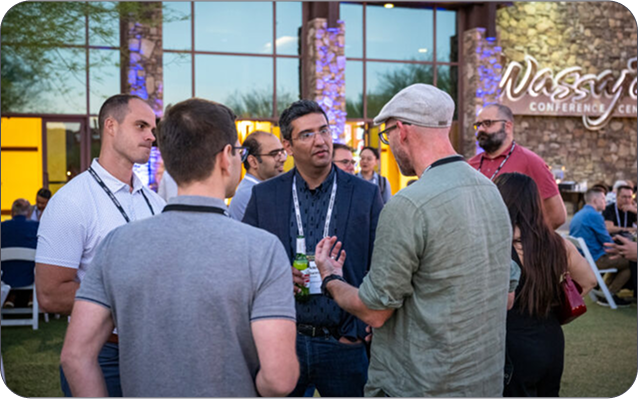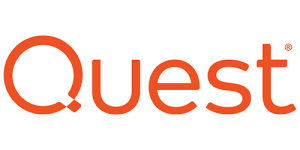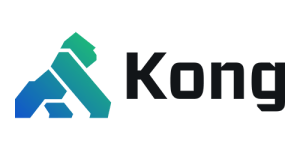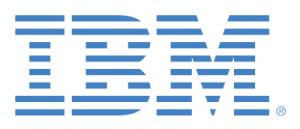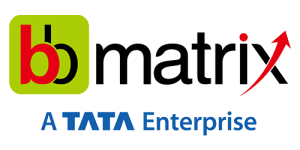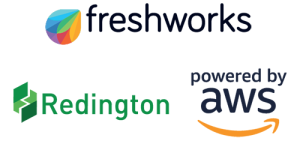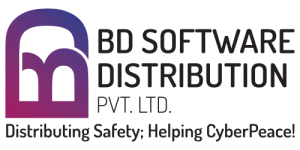India CIO Summit 2025
Architecting an AI-Fueled Business
Architecting an AI-Fueled Business
The last two years have seen unprecedented AI-driven innovation, boosted by the adoption of generative AI (GenAI) across entire organizations. C-suite executives and technology leaders across industries have been making significant investments in AI-led intelligence architecture and processes, with an increasing focus on advanced big data analytics, next-gen intelligent automation, intelligent applications, AIOps, AI-enabled security, and the convergence of AI and other technologies such as 5G connectivity, cloud, and IoT.
Unleashing AI-Driven Transformation
Business and technology leaders are facing countless opportunities and challenges on multiple fronts as they try to build strategies aimed at leveraging the full potential of AI. In order to be fully prepared, they must be able to identify critical developments in real time. They must also establish long-term strategies to ensure the fastest, most cost-effective, and fully trusted AI implementations, including the deployment of GenAI technologies at scale across business processes and the IT stack. Only then can their organizations successfully take on the challenges of an AI world and benefit from improved business agility and innovation while effectively mitigating the numerous associated risks.
Celebrity Spotlight
Introducing Jonty Rhodes: A legendary South African cricketer, renowned for his electrifying fielding, now a respected coach, commentator, and ambassador of the game. With a career that inspired millions, Jonty continues to shape the future of cricket both on and off the field.

Event gallery


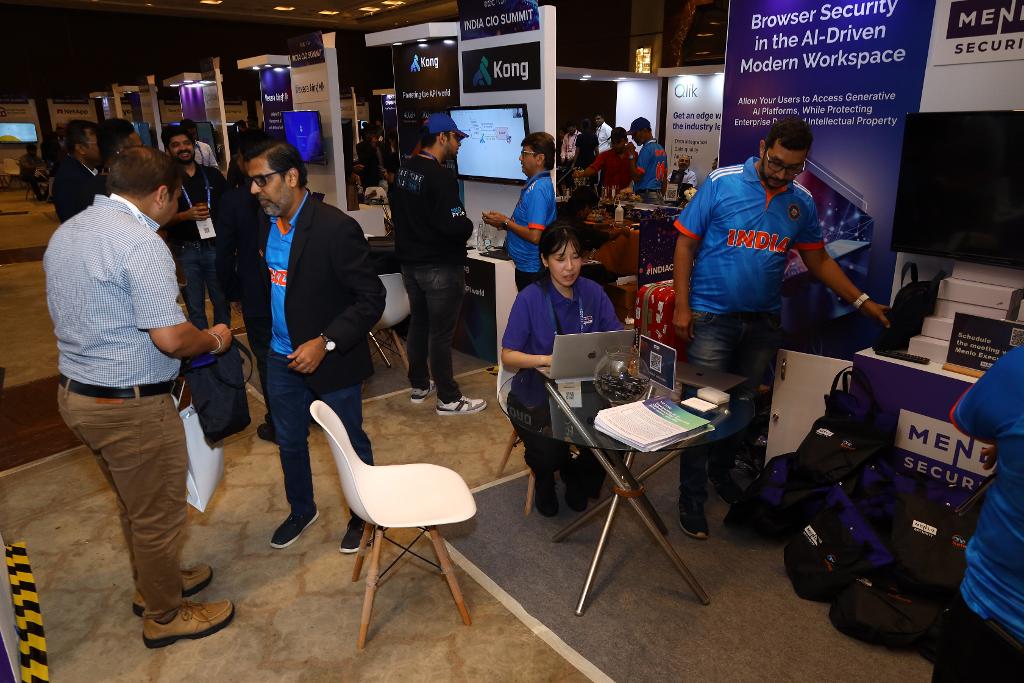
Venue
Global influencers shared powerful stories of how they confronted challenges — and created opportunities from them

ITC Grand Chola, a Luxury Collection Hotel, Chennai
63, Anna Salai, Little Mount, Guindy, Chennai, Tamil Nadu 600032
Lorem ipsum dolor sit amet, consectetuer adipiscing elit. Aenean commodo ligula eget dolor. Aenean massa. Cum sociis natoque penatibus et magnis dis parturient montes, nascetur ridiculus mus. Donec quam felis, ultricies nec, pellentesque eu, pretium quis, sem.
Knowledge Hub

CXO Spotlight Digital Transformation in Automotive Sector
Vinod Bhat,
CDO, Tata AutoComp Systems Ltd
With the changing Customer expectations, fluctuating demand and supply, managing connected assets in the factories, managing Data Explosion, the role of new age digital technologies has become more relevant than ever. The situation is no different in the Automotive manufacturing sector, where we talk about ‘lights-out’ or ‘dark factories’, with minimal human intervention. Such Digital Factories are supported by Industry 4.0 / 5.0 standards covering industrial IoT (IIOT) networks, Manufacturing Execution Systems (MES), Automation, Artificial Intelligence (AI)/Gen-AI, Data Analytics & Insights, Robotics, and real-time integration. A new Digital Operating Model in Manufacturing sector has evolved, which is based on the principles of Information Technology (IT) + Operational Technology (OT) convergence. It has four broad components – BAU IT systems, Infrastructure, Information/Cybersecurity and Manufacturing Excellence.
Every business process is getting reimagined with the right digital technology e.g. Zero-Trust security framework is getting extended to OT, Cloud computing / SaaS based solutions are picking up with asset-light footprint at factories. Security cameras are getting AI enabled, capable of handling 2-3 use cases at each camera level. Advanced Driver Assisted Systems (ADAS), Electronic Vehicle (EV) batteries, printed circuit boards (PCBs), Digital Twins, Battery management systems (BMS), 3D Vision cameras for Quality Inspection are some of the few Digital Interventions, which are making these factories and enterprises “Really Smart”.

CXO Spotlight Agentic AI: The Next Big Move for CIOs and Innovation Leaders
Gaurav Duggal,
Senior Vice President – IT & Security, Jio Platforms Limited
The future isn’t about controlling AI – it’s about collaborating with autonomous intelligence that can think, adapt, and drive innovation in ways we’re only beginning to understand. Agentic AI is reshaping the IT industry, turning AI from a passive tool into an active decisionmaker. Unlike traditional automation, it can think, learn, and act independently, optimizing operations, predicting issues, and scaling seamlessly. For CIOs and innovation leaders, this isn’t just another tech upgrade—it’s a fundamental shift that demands action. Businesses that adopt Agentic AI now will gain a competitive edge through efficiency, smarter decisionmaking, and proactive problem-solving. CIOs must take charge by integrating AI-driven solutions, ensuring ethical and transparent implementation, and upskilling teams to work alongside AI rather than fear it. The finance industry is already benefiting, using Agentic AI for risk-free lending, fraud detection, and hyper-personalized services, proving its immense value in real-world applications (Citigroup). Of course, challenges exist—data privacy, ethics, and system reliability must be carefully managed—but smart governance and strong oversight provide clear solutions (InfoWorld). The future belongs to those who take the lead. Agentic AI isn’t coming—it’s here. The question is, will you drive the change or struggle to keep up?

CXO Spotlight Enhance productivity in Chemical Process Industries using AI
Seema Gaur,
Executive Director – IT Services, Corporate Services, IFFCO
Today AI has penetrated into every domain of Business. The Chemical Process Industries (CPI) cannot be left behind. CPIs like Oil and gas, Fertilizer and Petrochemicals, are highly Energy intensive being heavily dependent on Fossil Fuels. Saving of even miniscule of Energy in these, can lead to huge savings of Cost. AI can play a vital role in reducing Energy consumption, increasing Productivity and Profitability for these Industries.
Use cases of AI in CPI, can be bifurcated into three major segments. First, real time advisory to Plant Operators for continuous Process Optimization, thru on line analysis of hundreds of parameters, using Machine Learning (ML) algorithms. Second, Predictive and Prescriptive Maintenance of Plant assets thru Time series analysis of their performance over past periods. Third, reducing waste and emissions, thru reinforcement learning of Production parameters; directly impacting Environment and sustainability of the Organization.
In the past two-three years, Industries World over, have taken major steps in this direction. A concrete long term plan is required to holistically study, assess and consolidate data, apply suitable analytical tools, to harness the power of AI. Foremost, cultural mind-set change, at the Organization level, is needed, before we embark on any such AI Project.

CXO Spotlight The Insurance “Techade” – Innovate, Integrate, Liberate
Kayzad Hiramanek,
Chief Operating Officer, Edelweiss Life Insurance
The insurance industry stands at a transformative crossroads. Technology, driven by large data sets, is reshaping every aspect of our business and the future of insurance is being defined by those who innovate on, integrate with, and liberate customer encumbrances. Insurers are rising to the challenge of thriving in a world where personalized solutions and communication, seamless digital experiences, and strategic partnerships are essential.
The Four Pillars of Insurance Innovation – one that is more connected, customer-focused, and dynamic than ever before.
1. AI-Powered Efficiency: From claims management to underwriting and fraud detection, AI and automation are revolutionizing operations. RPA is streamlining back-office tasks, boosting productivity, and paving the way for real-time pricing and on-demand insurance.
2. Personalized, Hassle-Free Insurance: Customers expect instant, intuitive experiences. AI-driven advisory, real-time claims tracking, and self-service platforms are making insurance simpler and more accessible, building stronger trust and loyalty.
3. Embedded Insurance – Protection, Anytime, Anywhere: Insurance is becoming an invisible yet essential part of daily life—seamlessly integrated into auto, real estate, healthcare, lifestyle and more. AI and real-time data are enabling instant, need-based coverage at the moment of necessity.
4. Connected Ecosystems for a Smarter Future: APIs, cloud-native tech, and IoT-powered insights are enabling insurers to collaborate across industries, offering dynamic, usage-based policies that evolve with customers’ needs.
Shaping the Future of Insurance
The insurance leaders of tomorrow will be those who embrace innovation, break traditional barriers, and create seamless, customer-first experiences. The future isn’t just about policies—it’s about protection that is intelligent, integrated, and effortless.

Analyst Spotlight Leadership and Management Strategies for CIOs
Sharath Srinivasamurthy,
Associate Vice President, Research, IDC
The role of the CIO has changed significantly in recent years. CIOs have shifted from managing IT to driving business outcomes, from managing a set of IT engineers to becoming a change manager, from a procurement manager to a strategic decision maker. According to IDC’s CEO Survey 2024, around 64% of organizations have the CIO directly reporting to the CEO. Correlating this data with the digital maturity of organizations, CIOs report to CEOs most frequently in organizations with higher digital maturity.
As per IDC research, there are five levels of maturity for the role of a CIO:
*The infrastructure CIO focuses on technical management and operations aimed at providing stable and reliable IT services
*The service provider CIO has moved beyond a “keeping the lights on” role to focus on control, standardization, and security of apps and infrastructure, not enablement.
*Architect CIOs oversee the provision of a stable catalog of digital services that generally meet the current needs of the business but are not always well-positioned to meet new and emerging needs.
*Connector/orchestrator CIO has developed an evolving vision for the digital transformation of the business and is building relationships with LOB peers and business leaders to advance that vision. Innovation and transformation initiatives are coordinated and managed to create sustained business impact.
*Visionary/pathfinder CIO acts as business co-creators, visionary strategists, and technology pathfinders, helping their enterprises set a new path forward, capable of delivering groundbreaking digital strategies and solutions, and providing competitive differentiation for the business.
For CIOs to transform themselves to a visionary/pathfinder CIO, there are four dimensions for them to work on:
*Strategic Vision: CIOs should develop and communicate a strategic vision that aligns with organizational goals and drives technological innovation.
*Leadership Traits in a Digital Era: CIOs should develop leadership styles and approaches that are effective in managing digital transformation and fostering a culture of agility and innovation.
*Managing Change and Driving Adoption: CIOs should manage organizational change, overcome resistance, and ensure the successful adoption of new technologies.
*Balancing Risk and Innovation: CIOs should balance the need for innovation with risk management, ensuring that new initiatives align with business objectives while mitigating potential challenges.
Strategic Vision: CEOs are constantly under pressure to deliver growth at an optimal cost. They are also expected to be contextually aware of technology advancements and visualize their impact on their organization and competitiveness. According to IDC’s CEO Survey 2024, the focus for CEOs has shifted back to growth, followed by trust post-pandemic. On the other hand, 39% of the CEOs feel that gaps in the execution of digital business strategy are a major concern, having the greatest impact on their organization. CIOs with a strategic mindset are the need of the hour. Are CIOs there? The answer is ‘no’ according to the CEOs. Around 72% of the CEOs feel their CIOs are focussing on the modernization of IT, risk management, and cost reduction. The expectation is that, in next two years, CIOs focus on orchestrating and leading digital transformation to create new revenue streams.
CIOs need to work with business leaders and LOBs to determine the digital maturity of the business and where it wants to be. They need to identify what technology interventions are needed and pace them to align with the organization’s strategy. Initiatives must be communicated top-down, and change agents to drive these should be deployed bottoms-up. Create KPIs and mechanisms to measure, report, and communicate those KPIs. At the same time, CIOs need to have a mindset of agility and humility to accept mistakes, make course corrections, and improvise.
Leadership Traits in a Digital Era: Leadership traits depend a lot on the organization’s culture and decision-making structure. In a centralized structure, decision-making is with one technology leader, and in a hybrid structure, decision-making is with multiple technology leaders with one leader working as an orchestrator. While most CIOs are comfortable working in a centralized or decentralized setup, they need to develop leadership traits to work in a hybrid structure.
As CIOs are increasingly aspiring to become business leaders with a seat on the board, they need to ensure strong and smooth working relationships with other technology leaders like CDOs, CISOs, and CAIOs and act as orchestrators. Taking this a step ahead, CIOs are also expected to work as orchestrators with other C-level business leaders like CMOs, CHROs, and CROs. So, CIO needs technology skills, business acumen and communication skills to work with multiple stakeholders and help organizations to execute and govern digital initiatives effectively.
Leadership and communication skills to engage with the board are also critical. Gone are the days when CIOs used to interact with boards only during cyberattacks, outages, and escalations. Organizations can’t afford such tactical interactions anymore and CIOs are expected to drive discussions around how technology can help take the organization to the next level. Building skills to communicate the vision, articulate the strategy, and provide regular and meaningful updates are critical.
Managing Change and Driving Adoption: While digital strategy and execution take center stage for CIOs as their roles evolve, managing change to drive adoption is equally critical. CIOs are best placed to act as change agents for the organization. CIOs need to become the change agents for their organizations not only to drive technology initiatives but to drive business initiatives. Before that, it is important for CIOs to understand who their stakeholders are. There are four stakeholders that CIOs need to deal with: management (CEOs, CFOs, COOs), LOB leaders, the board of directors, and their own teams. The journey of change should start with their own teams. The team needs to be convinced and onboarded on to the vision, mission, strategy, and execution plan of the CIO. To enable that, creating a culture of experimentation, failing, and learning, moving from project focus to products and customers, leveraging agile/DevOps, and calculated risk-taking are some of the initiatives that CIOs need to focus on.
CIOs need to encourage entrepreneurial behaviors to create organizations within an organization to foster innovation which will eventually help the organization to come up with new products and services. Driving adoption needs change management with a different lens. Driving home a consistent theme, building a sense of urgency, and introducing new business metrics that better communicate the value of IT is important.
Balancing Risk and Innovation: Driving innovation is about putting a mechanism in place to discover new ideas, vet, prioritize, and commercialize them. The pace of innovation is also important, as innovative ideas need to be taken to the market faster to be competitive. Innovation also brings resiliency to the organization.
IDC defines digital resiliency as the ability of an organization to rapidly adapt to business disruptions by leveraging digital capabilities to not only restore business operations but also capitalize on the changed conditions. The culture of innovation comes with a culture of entrepreneurship. There are multiple stakeholders in the journey of innovation: the board, CEOs, LOBs, other C-level peers, the IT team, IT vendors, and the industry ecosystem. The accelerated pace of innovation and involvement and multiple stakeholders (both internal and external) make an innovation journey risk-prone, which needs to be managed by the CIO, who acts as an orchestrator. Innovation drives growth, while risk management ensures security and compliance.
A major challenge while CIOs drive innovation comes from the fact that ideas come from disparate departments and, if left unmonitored, can lead to shadow IT, eventually increasing the risk for the business. CIOs need to establish a structured process for soliciting, ideating, vetting, and working on new ideas while meeting organizational standards within organizational boundaries. Technical challenges, market fit, and regulatory and financial implications need to be considered during the process of evaluation. Open communication and critical feedback from all stakeholders can ensure early resolution of potential issues.
According to IDC’s C-Suite Tech Survey 2023-24, the second most serious hurdle to completing digital initiatives is that security leaders slow down the initiatives due to risk management concerns. Integrating innovation initiatives as a part of larger organizational risk management framework and active involvement of personas like Chief Risk Officer and CISO in innovation governance is also critical.
The shift that is needed:
According to IDC’s C-Suite Tech Survey 2023-24, CEOs are taking the lead in driving digital initiatives in their organizations, and on the other hand, the majority of the technology leaders want to develop further as a CIO but with a more visible focus on digital transformation.
This clearly shows that CEOs want to be at the forefront of their organization’s digital initiatives, and technology leaders want to be aligned with them in driving digital initiatives. Technology is evolving at a rapid pace in this “AI Everywhere” world. CEOs are aggressively evaluating newer technologies to make a difference in their business and looking at CIOs as trusted associates who can handhold them on this journey. According to “IDC FutureScape: Worldwide CIO Agenda 2024 Predictions”, two-thirds of CIOs will not meet their 2025 digital revenue goals due to misaligned investments hindering business performance.
Primary reasons for this include a legacy mindset, outdated technologies, and, eventually, a struggle to balance budgets between digital initiatives and existing IT. CIOs need to demonstrate efficient resource allocation to balance the maintenance of existing IT systems and the adoption of advanced digital technologies. CIOs also need to deepen partnerships with other leaders in their organization to ensure technology decisions are holistic, integrated, and reflective of the broader business ecosystem.
The time has come for CIOs to move away from the role of keeping lights on and take up the leadership role of becoming the bridge between technology and business strategy.

Analyst Spotlight Security and AI Investments: A Symbiotic Approach to Future-Proofing Organizations
Sakshi Grover,
Sr. Research Manager, Cybersecurity Products and Services, IDC Asia/Pacific
In an era defined by rapid digital transformation and an ever-evolving threat landscape, organizations must rethink their approaches to security and innovation. The intersection of artificial intelligence (AI) and cybersecurity has emerged as a critical nexus for businesses aiming to protect their assets while enabling growth and resilience. By strategically combining investments in AI technologies with robust security frameworks, organizations can unlock new levels of efficiency, protection, and trust.
The Rising Complexity of Cyber Threats
The global proliferation of digital technologies has expanded the attack surface for cybercriminals. Threats such as ransomware, phishing, and advanced persistent threats (APTs) have become increasingly sophisticated, often leveraging AI themselves to evade traditional defenses. According to IDC’s Asia/Pacific Security Survey, August 2024, 66% of organizations in India express low confidence in their ability to counteract AI-powered cyberattacks. This highlights the urgency for businesses to adopt equally advanced solutions to stay ahead of adversaries.
AI: The Game-Changer in Cybersecurity
AI has become a cornerstone in modern SOCs and transforming multiple facets of the security landscape:
1. Threat Detection and Response: AI algorithms can analyze vast amounts of data in real-time, identifying patterns and anomalies that may indicate a cyberattack. Predictive analytics powered by machine learning (ML) enables SOCs to detect threats before they cause significant damage.
2. Automation and Efficiency: Security automation tools, such as Security Orchestration, Automation, and Response (SOAR) platforms, reduce the manual workload on IT teams. AI streamlines tasks like alert triage, incident response, and compliance reporting, improving overall operational efficiency.
3. Fraud Prevention: In sectors like fintech, AI-powered fraud detection systems analyze transaction patterns to predict and prevent fraudulent activities. Real-time decision-making enabled by AI minimizes financial and reputational risks.
4. Behavioral Analytics: User and Entity Behavior Analytics (UEBA) leverages AI to detect unusual behaviors, such as unauthorized access attempts or data exfiltration. These insights allow organizations to mitigate insider threats effectively.
Strategic AI Investments for Enhanced Security
To fully leverage AI’s potential, organizations must make targeted investments in areas that yield the highest returns, such as
• Generative AI in SOCs: Generative AI tools can assist security analysts by generating reports, summarizing incidents, and recommending actions, thereby accelerating decision-making.
• AI-Driven Threat Intelligence Platforms: By aggregating threat data from multiple sources, AI enhances the accuracy and relevance of threat intelligence, empowering organizations to anticipate and neutralize attacks proactively.
• Predictive Analytics for Risk Management: AI models that predict vulnerabilities based on system configurations and user behaviors enable organizations to adopt a proactive stance toward risk mitigation.
• AI in Identity Management: Advanced authentication systems, such as biometric scans and adaptive access controls, utilize AI to ensure secure and seamless user experiences.
The Role of Security in AI Deployment
While AI bolsters cybersecurity, it’s equally important to secure AI systems themselves. Poorly protected AI models are vulnerable to adversarial attacks, data poisoning, and model theft. To ensure trustworthy AI, organizations must:
1. Implement AI Governance Frameworks: Establish policies to oversee AI development and deployment, focusing on ethical use, fairness, and transparency.
2. Secure AI Pipelines: Protect data used to train AI models and monitor algorithms for signs of manipulation or bias.
3. Adopt Zero Trust Principles: Apply continuous verification and micro-segmentation to protect AI infrastructure from unauthorized access and lateral movement.
Building Resilience Through a Unified Approach
Investing in security and AI as interconnected pillars offers a dual advantage: enhanced protection against today’s sophisticated threats and the ability to harness AI for transformative business outcomes. By integrating AI into security frameworks and embedding security into AI ecosystems, organizations can:
• Reduce mean time to detect and respond (MTTD/MTTR) to threats.
• Enable scalable and secure digital transformation.
• Build stakeholder trust by demonstrating a commitment to safeguarding data and privacy.
The convergence of security and AI investments is no longer optional but a strategic imperative. Organizations that embrace this symbiotic relationship will be better equipped to navigate the complexities of a digital-first world. By fostering innovation while fortifying defenses, businesses can achieve the ultimate goal: a future-ready enterprise that thrives on trust, resilience, and intelligent decision-making.

Analyst Spotlight Realizing Business Potential with Generative AI: A Path for Indian Enterprises
Neha Gupta,
Senior Research Manager, Digital Business and AI Strategies, IDC
GenAI is becoming ubiquitous; soon it will be in every technology tool and solution any firm might use. Organizations are investing in a GenAI center of excellence to ensure understanding and managing the technology as it grows.
Based on the latest IDC FERS 2024 (Wave 10) results, 62% of Indian organizations have either already introduced several GenAI enhanced applications/services abilities into production or are investing significantly in GenAI with plans to launch applications/services in next 12 months.
There are three broad types of generative AI use cases:
* Productivity use cases are aligned to work tasks such as summarizing a report, generating a job description, or generating code in Java. GenAI functionality for productivity improvement is being infused into existing applications. For many of these use cases, business value can be delivered purely through the content and data that the underlying foundation models have been pretrained on.
* Business function use cases tend to integrate a model (or multiple models) with corporate data for use by a specific department or function (marketing, sales, procurement, etc.). Many organizations are testing these types of use cases but are concerned about intellectual property leakage and data governance.
* Industry use cases will generally require more custom work (and, in some cases, may even require building your own generative AI model). Examples include generative drug discovery in life sciences and generative material design for manufacturing. These are likely to be a source of real business value creation for larger enterprises that are able to put together a sufficiently large set of training data or work with other parties in their ecosystem to share data for training the model.
Enterprises have embarked on their generative AI journey by initially investing in productivity-enhancing use cases, which offer immediate value through task automation and efficiency improvements. As they gain confidence and insights from these early applications, organizations are beginning to explore more tailored business function use cases, integrating generative AI with corporate data to support specific departments like marketing, sales, and procurement. With growing experience and maturity, enterprises are poised to shift their focus towards more complex industry-specific applications. These industry use cases, often requiring custom models and extensive datasets, hold significant potential for revenue generation and transformative business value, positioning generative AI as a critical driver of innovation and competitive advantage.
While enterprises are eager to harness the potential of generative AI, they encounter several significant challenges on their journey. Cost constraints, regulatory concerns, skill shortages, and the ambiguity surrounding practical use cases often hinder progress. High infrastructure expenses, fears of intellectual property leakage, and hallucinated outputs exacerbate these issues, making it difficult for organizations to confidently advance. Moreover, the absence of clear, actionable business use cases further complicates the adoption of GenAI. As per IDC FERS 2024 (Wave 10) results, among Indian enterprises, 34% are concerned that GenAI jeopardizes our control of data and intellectual property assets, 28% are concerned about the excessive costs associated with adopting GenAI enhanced application software, 26% are concerned that GenAI will expose them to brand and regulatory risks.
To overcome these barriers, enterprises must focus on building robust GenAI frameworks grounded in validated AI principles. This involves anticipating regulatory changes, creating a clear roadmap of use cases, and fostering adaptable skill development to navigate the rapidly evolving GenAI landscape. By doing so, organizations can mitigate risks and unlock the full potential of generative AI.
Partnering with third-party vendors plays a critical role in accelerating this journey. External service providers offer early access to innovations, a pool of skilled talent, and rapid development capabilities. These partnerships not only enhance agility but also help manage stakeholder expectations, improve user adoption, and maximize the value of AI investments. As IT and business leaders increasingly drive GenAI investment decisions, there is a strategic shift towards aligning technology initiatives with broader business goals. This cross-functional collaboration underscores the importance of scalable, interoperable, and strategically aligned solutions, as enterprises expand their external service provider ecosystems to meet specialized needs.
For tech buyers, the next steps in leveraging GenAI for business transformation require thoughtful engagement with service providers. Inquire about their plans for integrating GenAI capabilities into both current and future engagements, with particular attention to data/IP protection, necessary team adaptations, pricing adjustments, and how they plan to maintain or enhance service quality and performance. Seek guidance from providers with proven GenAI expertise, emphasizing their involvement in R&D, thought leadership, client engagements, ecosystem partnerships, and internal reskilling efforts.
In the immediate term, buyers should prioritize building screening criteria for GenAI and AI use cases, based on a cost-benefit analysis, to ensure that investments are aligned with business priorities. Additionally, focusing on improving data literacy and cultivating a data-driven culture within the organization will be critical. Over the midterm, businesses should focus on data modernization initiatives, ensuring improvements in data quality, governance, security, and privacy, which are fundamental to enabling successful GenAI implementations and maximizing business value.
The IDC India CIO Summit 2025 will explore how GenAI is transforming into a critical necessity for gaining competitive advantage. Our goal is to guide you on your journey towards becoming a fully digital business, with GenAI seamlessly integrated across all facets of your operations.

Analyst Spotlight Service as software: Time to rethink your IT services sourcing strategy?
Rijo George Thomas,
Senior Research Manager, IDC
According to IDC, the Indian IT services market is expected to register the fastest growth among the Asia Pacific markets reaching US$20.6 Billion by 2028. A key contributor to the growth is the strategic role of IT service providers in managing the OPEX of critical enterprise IT landscapes through automation and most importantly, access to skilled technology and business talent, ensuring operational resilience in challenging business environments.
GenAI has taken the world by storm and continues to bring about new disruptions such as AI agents and agentic workflows which have the potential to orchestrate end-to-end changes in enterprise technology architecture. AI Agents are autonomous software entities that perceive their environment, make decisions, act upon them, and interact with users or other systems in a manner like a human. Salesforce, Microsoft, SAP, and other global SaaS providers are diving into this new wave of AI, designed to augment and in some cases fully automate human tasks.
According to IDC FutureScape: Worldwide Intelligent ERP 2025 Predictions, by late 2026, 65% of organizations globally will leverage AI to bring immediate employee and business value with AI-driven technology assistants, advisors, and agents enabling improved decisions. Satya Nadella in a recent interview talked about how the new software paradigm enabled by AI agents and agentic workflows will automate business logic and has the potential to reshape enterprise applications and infrastructure architecture, reemphasising that AI agents need to orchestrate across multiple technology landscapes.
The current trends point to a future where SaaS providers will automate several service elements provided by skilled humans or 3rd party service providers fundamentally altering how enterprises consume IT and business services. For example, if an enterprise requires application development/modernization services from a 3rd party provider for an ERP modernization project, AI can now automate much of the legacy to new code generation activity including deployment and customization, essentially converting the parts of service to service-as-software. A similar example in business services would mean instead of a 3rd party service provider delivering analytics services for the CFO, an AI agent can be a personal finance analyst for the CFO pulling enterprise data from multiple finance systems and recommending actionable steps to make improvements in the company’s bottom line.
According to the IDC study, GenAI’s Impact on IDC’s Services Markets, the impact of GenAI to date on the services markets has been gradual, providing examples of both spending increases and spending decreases in the same market, but with varying magnitudes depending on individual market dynamics. Although, IDC believes the net impact on IT and Business services spending will be positive, there will likely be substitutions and automation that cannot be ignored, as in the case of the emergence of cloud and transition to cloud services. According to IDC FERS 2024 (Wave 10) results, 22% of enterprises in India plan to reduce spending on external services as AI addresses more of their needs. Hence enterprises must rethink their IT sourcing strategy and identify service categories best fit to enhance or substitute with AI capabilities. Some IT and business service providers have already begun to combine service delivery with AI agents and agentic workflows to quicken speed to value.
In this regard here are IDC’s recommendations for enterprise buyers rethinking their IT services sourcing strategy across three critical segments
Professional Services: Professional services which mainly include consulting and system integration activities are harder to substitute. The value 3rd party service providers bring to C&SI projects is the wealth of experience, industry knowledge, and domain expertise from deploying projects for their global clients. The enhancement of C&SI services with AI would mean projects would get shorter and more strategic in scope. Work with partners who can pass on the efficiency gains from AI or are open to trying flexible deal constructs that guarantee outcomes. Additionally, professional service providers will play an elevated role as agentic workflow enablers for the enterprise, identifying potential use cases, ensuring successful deployment, and providing end-to-end governance, and trusted advisors to scale deployments across business functions.
Managed Services: With inflation and budget pressures mounting, organizations need to optimize IT spending to manage costs, especially across infrastructure and applications fuelling demand for managed services. IDC expects that the shift to cloud-based operating models will take the demand away from traditional managed services providers, instead driving opportunities for managed cloud providers to support multi-cloud operations. Work with partners who can enhance infrastructure operations that can automate deployment processes, management, protocols, and procedures (security, compliance) across cloud providers (AWS, Google, Azure, etc. ) or hybrid environments. According to the IDC study, GenAI’s Impact on IDC’s Services Markets, it is expected that enterprises will leverage AI increasingly as part of multi-cloud management platforms in the form of AIOps to support more complex needs in managing cloud environments.
Training and Support services: This is a services segment expected to have the most impact by AI agents and agentic workflows. According to the study GenAI’s Impact on IDC’s Services Markets, globally, more than half of enterprise leaders indicated that they have begun or are piloting GenAI initiatives for IT skilling and reskilling. The study also showed that in the next 18 months, IDC expects to see most existing IT training platforms add GenAI features and over the long term, GenAI technologies are likely to revolutionize enterprise learning experiences by creating immersive, interactive, and highly personalized lessons taking the market share away from service providers.
At the IDC India CIO Summit 2025 we will explore how GenAI is transforming the IT services sourcing strategies and how enterprises can identify service partners that can cater to your long-term goals.

Editorial Spotlight Shaken, Not Stirred: Tech Buying Process in 2025
Yogesh Gupta,
Editorial Director, Events, India & META, Foundry
Another year started up with a bright-lighted Xmas tree in the hindsight and a precise time for the CIO to spell out their big tech priorities, strategize their IT investments and pave a path of business transformation.
The year of 2025 is expected to a massively disruptive year from ‘Core to Cloud to AI to Gen AI’ as the futuristic CIO expects tech OEMs and ecosystem partners to declutter tech complexity, demystify hyped technologies to help navigate their career graph and accelerate their company’s business.
The tech buying process unlike in the past has not stirred across CIOs and their teams in recent years, but it has completely got shaken. And if you thought AI will perhaps make technology buying process less complex than the ‘already complex’ technology architecture for organisations, you may have erred a bit.
Around 66% of IT decision-makers in APAC agree that the purchase process for technology products and services is becoming increasingly complex as per Role and Influence of the Technology Decision-Maker Study 2024 by Foundry and CIO.
Why is it more complex? More people are involved as business and IT leaders present and explore new technologies to efficiently run their companies (31 is the average number of influencers in APAC buying team, and almost 50% are LOBs (and not from IT team))
Why is it becoming lengthy? The length of the entire buying cycle (for a large project) takes over half a year because of multiple influencers and more voices are being heard during the purchase process (7 months is the average length of the tech purchase process)
The good news is that increased automation is expected to accelerate tech purchase decisions over this year as two thirds of the survey respondents expect AI to transform process automation at their organization over the next 12 months. IT budgets seem to be not a problem in 2025 as more than 89% of ITDMs in APAC say their tech budgets will either increase or remain the same over the next 12 months.
External influences like customer requests are also expected to accelerate tech purchases in ÁI-everywhere’ world. According to the APAC 2024 State of the CIO research, improving the customer experience and capitalizing on emerging technology opportunities are in the top five business initiatives driving IT investment in 2024. Around 55% of APAC IT decision-makers say that their organization is adding AI specific roles who are increasingly involved in technology purchase decisions per Role and Influence of the Technology Decision-Maker Study 2024 by Foundry and CIO.
Advancing through the purchase process with help from vendors
The purchase process is becoming more complex and that provides a prime opportunity for vendors to help their customers (CIOs and teams). To navigate the complexity of technology purchase process, tech OEMs need to understand the influences behind tech purchases, get to know the buying committee and educate their customers (CIOs and teams) at every step of the way.
Here are some stats from Role and Influence of the Technology Decision-Maker Study 2024:
– 54% will seek a new vendor for tech purchases – mostly due to innovation, business need and cost
– 64% work with vendors to help them develop the business case around their investment in the technology
– 67% say that when all stakeholders are aware of a brand it makes the internal sell through process easier.
With new-age tools, strategic investments and business climate; AI capabilities continue to evolve and move as fast as a blink of an eye. CIOs and tech leaders are likely to adapt a “less is more” approach in 2025.
With support, help and advice form the technology OEMs, tech leaders will imbibe technologies to emerge as a ‘digitally transformed AI infrastructure’ organisation, perhaps with a shortened and a less complex tech buying process.

Partner Spotlight 2025 AI Predictions: The Future of Application Development
Krishna G,
Country Head, Solution Architecture, OutSystems India
It comes as no surprise that AI continues to dominate headlines as we enter 2025. The immense value that organizations can unlock with AI and generative AI (GenAI) is astounding. McKinsey estimates that GenAI alone could add the equivalent of up to $4.4 trillion annually in value to the global economy.
Our team at OutSystems has fully embraced AI’s transformative potential—from announcing our SDLC digital worker OutSystems Mentor to successfully leveraging the power of GenAI across our own use cases, we know it goes well beyond the hype. With 93% of executives planning to increase their investment in AI-powered solutions, it’s evident that other organizations are eager to harness its full potential too.
We believe AI will continue to reshape the future of software development, presenting countless opportunities to enhance efficiency, boost productivity, and deliver business value. Here’s a roundup of 2025 predictions and what these trends mean for IT leaders and their teams.
AI prediction #1. AI and low-code will bring developers into the C-suite
Starting in 2025, the convergence of AI and low-code will present endless opportunities for IT teams and how they engage with executives and other key stakeholders. The future will bring an acceleration of AI-powered low-code solutions. This will create a world where artificial intelligence no longer generates code, it generates applications. This will completely transform how organizations create, customize, and modernize their applications.
What this means for IT teams: By leveraging AI-powered low-code solutions that eliminate the day-to-day grunt work, developers will be able to step into an elevated role where they can spend more time having impactful conversations with decision-makers about how technology can help solve business problems and achieve objectives. This evolution will complement developers’ best qualities—both their creativity and innovation—and challenge them to grow into a leadership role within their organizations.
AI prediction #2. AI interactions will go multi-modal
In 2025, humans will interact with AI models using a much broader range of languages and media, from text to video to imagery. This will significantly affect use cases, as more AI users will increasingly upload images or videos into AI models versus typing out lengthy prompts.
What this means for IT teams: From an application development standpoint, this is another opportunity for IT teams to embrace the combined power of AI and low-code to truly transform not only how they build applications, but also how they maintain and evolve them too. IT teams will be able to recreate or tweak common UIs by sharing a screenshot and instructions with an AI-powered low-code solution and achieve accurate results in a fraction of the time it would have taken to write new code.
AI prediction #3. Conversational AI will radically transform how customers interact with digital platforms
Transforming the customer experience consistently ranks high on the list of priorities for IT leaders, especially as it becomes a vital differentiator in a highly competitive market.
I believe AI will redefine how businesses engage with customers in 2025, moving beyond traditional interfaces to conversational, prompt-driven experiences. Instead of interacting with windows, buttons, or forms, we believe customers will increasingly engage with businesses through natural language prompts across text, audio, and video.
What this means for IT teams: To meet increasing customer expectations and maintain a competitive edge in 2025, IT teams will be fundamental in leading the charge to embrace data-driven, conversational technologies that foster customer engagement. This is an opportunity for IT leaders and their teams to prioritize the customer in technology decisions in 2025 and use it to increase retention and loyalty.
AI prediction #4. Continued evolution of AI will introduce new ethical, security, and governance concerns
AI will continue to evolve, expanding its interactions in the virtual world by autonomously controlling computers and in the real world through autonomous vehicles, drones, and other IoT devices. This increases the level of AI-controlled interactions with humans and even between machines, which in turn will introduce a whole new layer of ethical, security, and governance concerns that we’ve never experienced before.
What this means for IT teams: Advancements in security and governance mechanisms are crucial for building trust and ensuring GenAI is deployed responsibly, securely, and in compliance with regulations. In 2025, I believe an increasing number of IT teams will implement DevSecOps practices that better manage risks and mitigate threats in their custom software and think this should be a top priority for all IT teams as their organizations explore more GenAI use cases.
AI prediction #5. Data integration and quality will impede GenAI success
Companies implementing GenAI will continue to face data integration, quality, and privacy challenges—and will be the biggest hurdles in driving GenAI scalability and success in 2025. Understanding data structure and integrating data will be key as organizations look to expand adoption and unlock the full value of AI.
What this means for IT teams: To address the challenge of data silos and fully take advantage of GenAI’s powerful capabilities, I believe IT leaders and their teams need to prioritize data consolidation and integration, which will require unified platforms. Safeguarding data privacy and mitigating bias will also be essential during this process to maintain trust and compliance.
AI and low-code is the way forward
As we look ahead to software development in 2025, it’s clear to us that AI and low-code will play a central role, providing organizations a foundation for agility, scalability, and infinite innovation possibilities. By capitalizing on new technological advancements, IT leaders and their teams can help their organizations achieve efficiency at scale, gain a competitive advantage, and build resilience.

Analyst Spotlight Unleashing the Power of AI for a Sustainable Future of Indian Organizations
Surjyadeb Goswami,
Research Director, IDC
Artificial Intelligence (AI) has the potential to create a lot of economic impact and facilitate sustainable development. Automating the collection of ESG-related data and improving reporting accuracy allows organizations to enhance their productivity and streamline their operations. Alternatively, if uncontrolled, AI can negatively impact the ESG objectives of an organization. Algorithmic bias, for example, could result in unjust and or unethical decisions further jeopardizing trust and compliance.
Organizations embedding AI into their business model strategies need to prioritize and build around the right sustainability use cases which provide both financial and non-financial benefits. It is equally important to recognize the unique risks AI may pose within specific industries. To completely harness AI’s potential, IT vendors must focus into building a deeper understanding of how AI and sustainability intersect.
IT buyers also have a major role to play in this by clearly defining their needs for AI-powered sustainability solutions and understanding the risks involved. They can ensure maximum ROI while safeguarding their operations from unintended consequences. A strategic approach to AI and sustainability can create lasting value for all stakeholders inside and outside of the organization.
IDC’s 2024 AI & Sustainability Survey reveals that, over one-third of the Indian organizations recognize AI’s critical role in sustainable transformation, also over half of them rate Sustainability/ESG “More Important” than other business metrics in their AI strategy, indicating ESG has become a primary driver for AI implementation rather than just a ‘consideration’.
AI for Sustainability
Generative AI (GenAI) and related technologies have great potential to accelerate sustainable transformation for various industries. The specific use cases for that are quite varied and largely depend on several aspects as follows:
• The distinctive ESG challenges that a particular organization needs to deal with.
• The operational stakeholder ecology of the organization.
• The nature of the supply chain eco-systems.
• If the enterprise delivers digital or physical products and services.
There are also distinctive differences in the demand for AI-powered solutions depending on the level of maturity of the organization. Companies who are just embarking on their AI-enabled sustainability journey tend to be more compliance driven and concentrate on the basic building blocks. Such companies look for vendors whose technology not only provides optimal solutions for them but also helps them to achieve optimal results through proper application of the technology. Vendors also must cope with some contradictions in their product offering and marketing strategy whereby they are required to balance functionality, usability, and ROI in the increasingly complex environment of multiple enterprises undergoing a sustainability transformation. Ultimately, tailoring AI solutions to specific industry needs and maturity levels is essential for driving meaningful environmental and business impact. An overwhelming 87% of Indian organizations plan to increase their AI investments for Sustainability/ESG purposes, indicating a strong future commitment to sustainable AI adoption.
IDC predicts*, by 2026, 40% of organizations in Asia/Pacific will leverage generative AI to develop more granular and operationally focused sustainable transformation strategies. Early adopters in sustainability-focused markets like Singapore and Australia have reported faster delivery of insights and enhanced carbon accounting through generative AI. In India, challenges exist around ESG data availability and foundational readiness. To fully harness generative AI for sustainability, Indian organizations need to strengthen their data infrastructure and analytics capabilities.
Sustainable AI: Managing AI’s Environmental and Social Impact
The rapid growth of AI is significantly increasing energy and computational demands on datacenters, necessitating extensive infrastructure upgrades. These upgrades come with heightened carbon emissions and the creation of physical assets with embedded carbon, which will eventually require decommissioning. Generative AI (GenAI) is particularly resource-intensive, relying on power-hungry GPUs that consume 10-15 times more energy than traditional CPUs. Energy demands are especially high during the early stages of the GenAI lifecycle, such as training and tuning AI models. This underscores the importance of managing AI’s environmental footprint to ensure that its growth aligns with sustainability goals.
IDC predicts*, by 2027,50% of enterprises in Asia/Pacific will implement sustainable AI frameworks, leveraging data-driven decisions to scale AI operations across datacenter locations while meeting decarbonization goals. The Asia/Pacific region is one of the fastest-growing datacenter markets globally, with hubs in Singapore, Hong Kong, and rapidly expanding regions like Southeast Asia and India. Countries like India, Singapore, and Australia have committed to net-zero targets on carbon emission, prompting stricter regulations for high-energy sectors, including datacenters.
Conclusion
The integration of AI into sustainability practices across the Asia/Pacific region represents a pivotal shift toward balancing technological growth with environmental responsibility. From adopting sustainable AI frameworks and generative AI for ESG strategies to prioritizing sustainable procurement and collaborative AI solutions, organizations are reshaping their approaches to sustainability.
As sustainability strategies evolve to become more holistic and ESG materiality drives action, it is crucial to address the diverse ESG challenges that AI may introduce. Practitioners must focus on selecting solutions that align with their organization’s most critical sustainability priorities and deliver tangible impact.
IDC predicts*, by 2027,50% of IT buyers in APEJ will only work with vendors that meet social, environmental, and governance-related responsible AI criteria in accordance with sustainable procurement requirements. With its dynamic IT sector and growing emphasis on sustainable development, India is well-positioned to adopt sustainable procurement practices. These changes will encourage local and global vendors to integrate ESG considerations into their offerings.
Indian enterprises can lead the way in leveraging AI for sustainable development by addressing challenges in ESG data readiness and fostering collaboration and attaining to the commitment to decarbonization in coming years.

Partner Spotlight Accelerating Enterprise GenAI Adoption: A 90-day Framework for Success
Rahul Jha,
VP Cloud and Infrastructure Services (CIS), Visionet
GenAI has the potential to transform businesses by making processes more efficient, creating new revenue streams, and driving innovation. From automating repetitive tasks to enhancing customer service and optimizing decision-making, enterprises are eager to tap into its benefits.
However, despite its potential, many organizations struggle to adopt it effectively. A recent IDC survey found that 30% of CIOs were unaware if their AI proof-of-concepts (POCs) met key performance metrics. Even more concerning, 80% of AI projects never make it past the pilot stage, and up to 30% fail completely. Common barriers include a lack of expertise, skepticism about ROI, integration challenges, and resistance to change.
So, how can enterprises cut through the noise and make GenAI work for them? The answer lies in a structured, 90-day framework. The following 90-day framework is designed to provide a clear, actionable roadmap to kick-start GenAI adoption while aligning projects with tangible business objectives.
Day 1-30: Laying the foundation
The first month is about building a strong foundation. Start by securing executive buy-in. Leadership must understand the strategic value of GenAI and champion its adoption. Align stakeholders across departments—IT, HR, operations, and marketing—to ensure collective ownership.
Next, define clear objectives and metrics. Whether it’s reducing operational costs, enhancing customer experience, or generating new revenue streams, tangible goals are critical. Develop key performance indicators (KPIs) to track progress and measure success.
Assemble a cross-functional GenAI task force, including data scientists, AI engineers, business analysts, and change management specialists. Invest in upskilling employees to bridge the skills gap. Finally, assess your organization’s existing AI capabilities, data infrastructure, and cloud services to identify gaps in resources, security, or data access.
Day 31-60: Pilot projects and early wins
The next 30 days focus on identifying high-impact, low-risk use cases like AI-driven chatbots, automated content generation, or predictive analytics for early adoption. These projects should be tested in real business settings with clear validation plans.
Develop a Minimum Viable Product (MVP) for the chosen use case and ensure proper testing as well as monitoring to fine-tune AI models based on real-world data. The faster teams can demonstrate quick wins, the easier it becomes to build momentum. Sharing these results with internal stakeholders also helps get more teams on board and drives excitement for broader adoption.
Day 61-90: Scaling and integration
In the final phase, optimize AI models based on the pilot’s feedback and performance to improve accuracy and efficiency. Lastly, collaborate with business units to integrate GenAI into existing workflows and align it with broader company goals.
Wrapping up
Adopting GenAI doesn’t have to be overwhelming. By following this 90-day framework, enterprises can accelerate GenAI adoption, mitigate risks, and deliver measurable business outcomes. With a structured approach, organizations can move beyond pilot purgatory and fully harness the potential of GenAI.
Want to see GenAI in action? Visit Visionet at the IDC India CIO Event to explore real-world GenAI solutions.

Partner Spotlight 2025 Trends – After AI: What’s Next?
Dan Sommer,
Senior Director, Market Intelligence Lead, Qlik
AI: Where Do We Go From Here?
AI is no longer a distant prospect—it’s here, and it has reshaped how we think, work, and innovate. But in its wake, a cacophony of contrasting perspectives has emerged:
Scaling laws: Some argue that we’re hitting the limits of AI scaling, with future models expected to taper down. Others predict exponential growth, with “S-curves on top of S-curves,” signalling that we haven’t seen anything yet.
Singularity: While some believe the singularity is just around the corner—perhaps even next year—others are confident it will never happen.
Costs: The debate over costs is equally polarized. Some claim that AI costs are spiralling out of control, while others point to dramatic cost reductions. Meanwhile, we see pre-product AI startups valued in the billions, with scepticism about when, or if, that value will be realized.
Cutting Through the Noise
As data and analytics leaders, how do we respond to such divergent views?
We can’t afford to sit back and wait for pundits to settle their debates. Nor can we rely solely on hype or succumb to doom scenarios. That would be the easy way out—and the wrong one. Instead, we must embrace our role as key stakeholders in shaping AI’s trajectory, ensuring we steer clear of negative externalities and foster positive outcomes.
To do this, we must filter the noise, lean in, and get to work.
The “3As”: The Focus Areas for 2025
In this year’s , we will explore three dominant themes—what we’re calling the “3As”:Qlik Trends Edition
Authenticity: The need for truth, trust, and transparency in data and AI.
Applied (AI) Value: Moving beyond theoretical capabilities to tangible, scalable business value.
Agents: The rise of intelligent, autonomous systems that act on behalf of organizations and individuals.: The rise of intelligent, autonomous systems that act on behalf of organizations and individuals.
What’s new this year is input from our AI Council, a fantastic sounding board that brings global insights from diverse areas of AI development. Their contributions enrich our understanding and help ensure these trends are actionable and forward-looking.
Register here to view the eBook on the above three themes and underlying trends that will dominate the AI conversation in 2025—and discover what they mean for your business.
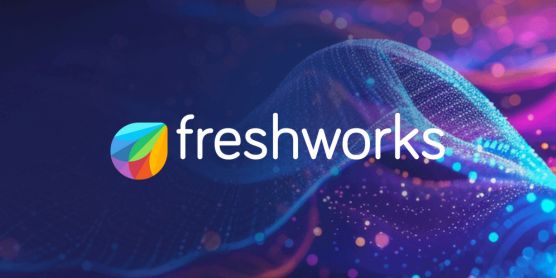
Partner Spotlight How ‘people-first AI’ creates competitive advantage
AI developed as a collaborative tool for employees isn’t just a value statement, it’s a winning combination for business.
Businesses have reached the hard part of implementing AI: After initial investment and experimentation, they are knee-deep in the messier phase of execution. CIOs and other leaders face big decisions about how entire business functions will use AI at scale—and how to navigate the impact of those decisions on jobs, roles, and teams.
It’s easy to get caught up in endless studies and headlines about AI and people: How many jobs will AI eliminate vs. how many it will create? What types of roles are most vulnerable to automation vs. those that aren’t? What proportion of overall tasks will AI take over?
The clearest insight on these questions, I think, comes from Garry Kasparov and the world of championship chess.
In 1997, the IBM supercomputer Deep Blue infamously beat the chess grandmaster in a six-game match. But the loss didn’t send Kasparov into forced retirement. Intrigued by the technology, the reigning world champ began pursuing a different idea: As he recalled recently in Harvard Business Review, the experience led him “to rethink how the intellectual game of chess could be approached differently, not simply as an individual effort but as a collaborative one.”
So began a series of experiments pairing players and computers not as opponents but partners. By 2005, one “freestyle” chess tournament allowed players of any skill level, from amateurs to grandmasters, to team up with computers to try and beat their opponents. While many expected the grandmaster-led teams to walk away with all the prize money, it was a pair of amateur American players, collaborating with three computers, who won the tournament.
What gave the less experienced team the winning edge? As Kasparov writes, “it was their ability to coordinate and coach effectively their computers that defeated the combination of a smart grandmaster and a PC with great computational power.”

Partner Spotlight Simple, Smart and Easy-To-Use: Why Neat is the Future of Video Conferencing Technology
Manu Sharma,
Regional Director, India & SAARC, Neat
As people continue to return to the office, it has become the destination for collaboration, with hybrid and remote employees coming in for team planning, brainstorming and events. As a result, it’s become more apparent than ever that modern workplaces require flexible spaces that can adapt to support where and how teams want to collaborate. They also need to provide the technology teams need to be fully engaged and effective, including collaboration, workplace management and productivity solutions.
Neat, a pioneering video device company founded in Oslo, Norway, is delivering all that and more. Since its inception, Neat has focused on tackling complex collaboration challenges with unique solutions, developing tech that’s attractive and intuitive, and which makes teamwork open, fun and dynamic.
Simple, elegant devices to support creativity
Neat has reimagined how teams connect, collaborate and innovate in a world where work happens everywhere, with simple, beautiful, easy-to-use devices that seamlessly bridge in-office and remote work. With a complete portfolio addressing a wide range of environments, from large meeting spaces to open areas, traditional conference rooms and huddle spaces, Neat has set new standards for effective and inclusive collaboration.
Neat offers multiple devices for the hybrid workplace, including its best-seller, the Neat Bar, which mounts above or below your monitor and pairs with the Neat Pad, which can be used as either a controller or scheduler outside the room. Neat Board is an all-in-one collaboration device with smart whiteboard capabilities that delivers exceptional flexibility and power for meeting rooms and flexible spaces. Neat Center, a centre-of-room companion device, uses machine learning to focus everyone in the meeting space no matter where their attention is. Neat Frame is a personal video device for individual use in huddle spaces or at home.
Neat’s design-driven innovation and beautifully simple video devices set it apart in an industry inundated with clunky, complex and unreliable solutions. Ideal for companies of all sizes, Neat’s meticulously crafted video collaboration devices deliver exceptional audio and video quality while blending into any workspace environment. That commitment to innovation and design is underscored by its numerous patents and 11 Red Dot awards received over the past four years.
Neat devices offer unique experiences, making collaboration more personal and natural. The experiences Neat devices offer to the end-user are made possible by Neat Symmetry, which presents everyone in a meeting room equally, whether they’re sitting, standing or moving around, enables remote participants to engage in more natural, free-flowing conversation. Neat Boundary, meanwhile, removes the worry of being distracted by other activities happening around you. By setting a virtual width and depth to define your meeting space, the camera will avoid detecting, auto-framing and following people that aren’t part of your meeting.
Not only that, but a recent partnership with audio giant Shure has added industry-leading audio to industry-leading video, a collaboration that’s poised to boost Neat’s audio capabilities in larger, more complex meeting rooms.
Beyond video meetings
Neat’s revolutionary video conferencing and collaboration solutions extend beyond hardware that’s stylish and easy to use. Neat Pulse is a full-service device management offering that gives users a choice of which applications to run on their Neat devices, as well as API access, remote control, premium support care, and extended warranty coverage. It allows organisations to maintain device security and optimise their meeting rooms, offering real-time insights and analytics to enhance efficiency and user experience.
Neat App Hub, meanwhile, integrates seamlessly with Neat devices, expanding their functionality beyond audio and video to include a suite of productivity-enhancing applications, such as Miro, Browser, Flowscape and more. With plenty of apps already available and many more to come, the capabilities App Hub offers only furthers the distance between Neat and the competition.
What everyone’s talking about
Neat customers worldwide have praised the company for its simple but impressive devices, and the dedicated workforce that empowers them. “Pre-Neat, our work culture wasn’t focused on taking group meetings but rather on individuals connecting on their laptops with a mixed bag of cameras, speakers and other complicated and disorganised equipment,” says Fahad Qureshi, Senior Director of IT Operations, talabat. “The experience, quality and results we get from using Neat devices are top-notch compared with other vendors we tried. Even though Neat is a young company, it’s already successfully competing with the giants in the video conferencing industry.”
Today’s modern office requires adaptable spaces and technology to help employees collaborate creatively. With groundbreaking devices, platform support for business applications and services to simplify deployment and management, Neat is providing businesses with the flexibility, accessibility and simplicity they need to succeed now and in the future.

Partner Spotlight Combining Context-Rich Business Data with Resilient Systems for Successful AI Adoption
Anand Nergunam,
Vice President – Revenue Growth, Zoho
AI adoption is a top priority for Indian businesses today, driven by the need to stay competitive in a rapidly evolving market. As AI use picks up, optimising investments for maximum impact is the real challenge. This requires firms to build a strong data foundation that ensures accuracy, reliability, and timeliness, enriched with deep business context. However, data alone is not enough—companies also need a robust technology ecosystem on which AI can thrive and drive meaningful differentiation.
To achieve this, the technology systems must be interoperable, extendable, and agile. Interoperability enables tight integrations across systems—crucial for contextual intelligence and holistic insights, while extensibility empowers adaptation to unique business environments with custom workflows, modules, etc. Equally important is the self-serve aspect of the systems that will allow for agile day-to-day change management to keep up with market demands.
The ability to orchestrate these elements effectively will define a business’s capacity to lead in the AI era. A platform-driven approach that combines contextual data with robust and flexible domain-specific systems can provide this much-required foundation.
AI excellence with domain-specific platforms and flexible development frameworks
Domain-specific application platforms: For their technology ecosystems, businesses should consider platform-led solutions built specifically for particular domains like customer experience, employee collaboration, finance, IoT, etc.,. They offer a significant advantage over generic platforms where companies end up building every workflow from scratch because of a blank canvas—a time-consuming and resource-intensive process. Domain-specific platforms, instead, provide pre-configured capabilities for a quick start across business functions while also allowing teams to further tailor, extend, and adapt the solutions’ functionalities to unique needs. This offers a good balance between the abstraction of open platforms and the turnkey aspect of point solutions.
Low-code/no-code development capabilities: Traditional large-scale software implementations have long relied on pro-code development for even minor changes, leading to longer development cycles and higher costs. A smarter approach involves adopting a mix of no-code, low-code, and pro-code options. The array of capabilities enables teams to write custom code only where absolutely necessary and otherwise extend or alter workflows using flexible low-code tools, significantly expediting custom development processes and enabling responsiveness.
Domain-specific platforms ensure rich, context-aware data, while low-code and no-code capabilities provide the agility needed to keep pace with market dynamics. This integrated approach can in turn greatly enhance the speed and accuracy of AI adoption, positioning companies to lead in an increasingly AI-driven marketplace.

Partner Spotlight AI Agents: Why They Need an Operational Database
Tim Rottach,
Director of Product Marketing, Couchbase
Introduction
AI agent applications are poised to transform the way employees and customers interact with computer systems. By gathering data, reasoning and executing tasks, these agents will automate human workflows across countless current use cases — from internal support bots to sophisticated customer-facing services — across every industry. Some are looking toward analytical databases to power these agents. However, AI agents are fundamentally operational in nature, much like traditional web applications, mobile apps and microservices. Recognizing this distinction is critical for selecting the right data platform.
What Are AI Agents and How Do They Work?
Unlike legacy applications restricted to rigid inputs and predefined logic, AI agents dynamically interact with their environment. They continuously receive and process data from multiple sources, perform real-time reasoning and autonomously execute tasks. They use various tools, functions and system prompts to retrieve relevant data, ask the next questions, refine their reasoning and take action.
Because agents rely on large language models (LLMs) or other advanced machine learning techniques, they need to operate in real time and require a data infrastructure that supports frequent, low-latency read and write operations. This is why an operational database — one designed for immediate, ongoing interactions rather than delayed batch processes — is essential.
The Data Sources – A Retail Example
A typical AI agent in a retail setting might use a wide array of operational data, combining both classic and AI-specific data. Here are just a few examples:
● User profiles and preferences: Enables hyper-personalized recommendations and customer experiences.
● Product catalogs with media: Allows for a richer user experience.
● Inventory data: Ensures items are in stock and conveniently located for fulfillment.
● Web calls and external APIs: Agents can retrieve additional information — such as celebrity associations, contextual reviews or market sentiment — to enhance recommendations.
● Historical sales data: Supports upselling, cross-selling and predictions of what a customer might purchase next.
● Unstructured content: Documents such as PDFs detailing product usage or care instructions can be integrated to improve the quality of agent responses.
● Vector embeddings: Required for semantic search and retrieval-augmented generation (RAG), drastically improving LLM responses without retraining custom models.
Agentic AI also needs to maintain information on the tools and functions that developers create. This metadata helps the agent choose which function or data source to invoke, continuously evolving its skill set. Additionally, semantic and conversation caching allows the agent to reuse existing context, improving speed and reducing costs by minimizing repeated requests to expensive LLM endpoints. As prompts and tools evolve, the system must capture and maintain the history of interactions, including transcripts, decisions and intermediate reasoning steps. For other industries, the core operational data types may differ (for instance, sensor readings in manufacturing), but the underlying principle remains the same: AI agents require a capable operational database that can handle diverse data formats, frequent updates and real-time accessibility.
Why an Operational Database Matters
Using multiple, disparate technologies — one for caching, another for vector search and another for transactions — can degrade performance, hinder management and complicate data governance. For AI agents to deliver timely results, all these data interactions must occur with minimal latency.Operational databases excel at high-velocity, high-concurrency workloads that demand real-time reads and writes. They also typically offer robust replication and clustering features to ensure high availability, which is critical for AI-driven applications that must remain responsive.
Conclusion
AI agents are set to become a cornerstone of modern computing. Choosing a platform specifically designed for speed, scalability and low-latency interactions ensures AI agents can effectively gather, process and act on information — delivering robust, context-rich experiences to end users. By their very nature, they generate and rely on real-time data, making operational databases a necessity for AI agents.
Couchbase AI Services have been introduced by Couchbase to securely interact with AI models, incorporate unstructured data and provide out-of-the-box semantic and conversation caching. The Agent Catalog feature makes it easier for developers to discover, manage and secure the tools and functions an agent needs, integrating seamlessly with popular AI frameworks such as LangChain. Additionally, Couchbase’s multipurpose database eliminates the need to use multiple, single-purpose databases, reducing the complexity and costs of application development.
Stay tuned for exciting news!
Lorem ipsum dolor sit amet consectetur. Dui egestas in senectus suspendisse enim.Lorem ipsum dolor sit amet consectetur.
Register Now